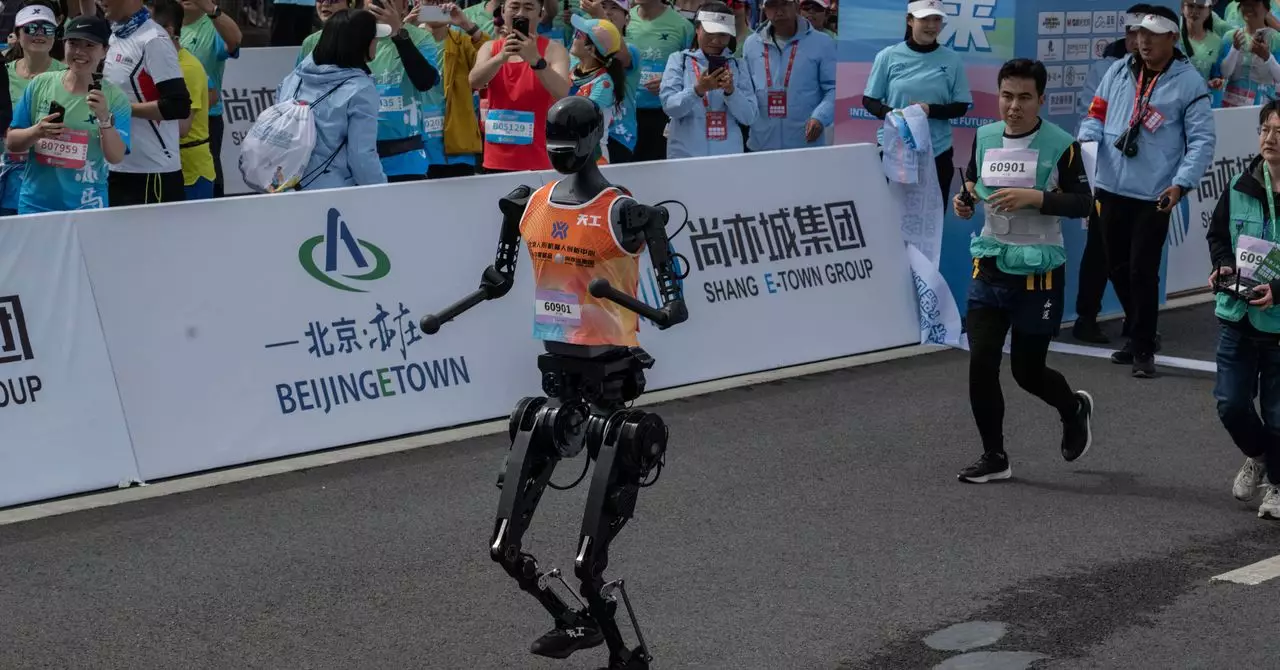In recent years, the spectacle of humanoid robots performing choreographed dances or competing in quirky races has captivated audiences and stirred buzz in technology circles. While these displays may dazzle the crowd, they mask a more pressing question: How effective are these robots in real-world applications? As raised by experts like Fern, the benchmarks used to assess robotic capabilities often veer towards entertainment rather than practical functionality. A robot that can shuffle through a dance routine or run a race may look impressive, but what does it really accomplish in settings where human assistance is minimal? Fern predicts a pivot in focus for countries like China, where the novelty of robotic performances is likely to wear thin. It’s a call for a deeper understanding of robots that can tackle diverse, unstructured tasks, which is where their true value lies.
A Race of Mixed Success
The recent humanoid robot race showcased a multitude of entries, from charmingly pint-sized competitors to towering giants. The varied design ethos reflected the creativity of their developers, yet a common thread ran through the event: all robots were required to be bipedal. Designers clearly took liberties with this fundamental criterion, experimenting with quirky accessories and modifications to enhance performance. The imaginative outfits, like sneakers glued to feet and knee pads for protection, sparked some inspiration but also highlighted a fundamental reality—many of these aids were merely decorative rather than functional.
Observing the race, it became clear that while some robots, such as Tiangong Ultra, demonstrated a reliable and calm approach, many others floundered spectacularly. Huanhuan, for example, ventured forward at a lethargic pace, struggling to maintain its balance as its head precariously shook above its shoulders. Meanwhile, Shennong, an ambitious but hapless entry, garnered attention not for racing prowess but for its comic misadventures as it twirled in circles, dragging down human operators along with it. The event, far from being a window into the future of robotics, served as a humorous reminder of how far these technologies have to go before they can effectively function alongside humans in everyday situations.
Human Intervention: The Unsung Heroes
One of the most striking elements of the race was the evident reliance on human operators, underscoring the limitations of these robotic creations. Each robot typically required two or three humans running alongside, either managing a control panel for live adjustments or clearing the path of obstacles. The race became less about the autonomous capabilities of robots and more about the necessity of human intervention. This reliance was humorously illustrated when duct tape emerged as a crucial tool for problem-solving. It was repurposed for everything from crafting improvised footwear to reattaching heads that had become detached mid-race—an indicator that the robots still require considerable assistance.
This perspective raises a critical point about the strength of human-robot collaboration. Rather than viewing these machines as independent entities showcasing their own advancements, it may be more accurate to see them as tools that require human support to fulfill their potential. Consequently, as spectators chuckled at the unfolding chaos, it became evident that the future of humanoid technology may not lie in spectacle but rather in forming cohesive partnerships with humans.
Shifting the Narrative: Toward Practical Applications
It’s clear that the entertainment value of humanoid robots cannot be dismissed, yet the door must be opened to a more profound narrative. As we find ourselves captivated by the flashy moves and quirky designs, it’s imperative to recognize the true impetus behind robotic innovation—the creation of machines that enhance human productivity and address real-world challenges. If developers and researchers recalibrate their focuses toward creating humanoids capable of performing practical tasks with autonomy and efficiency, we might witness a significant leap forward in this technological domain.
Fern’s assertion seems to be that the gargantuan strides in robot technology warrant a redirection from mere performances to functionalities that can bring tangible benefits. Emphasizing utility over entertainment will not only sustain public interest but also fuel innovation that fosters genuine partnerships between humans and robots. After all, the goal of robotic advancements should not merely be to entertain but to serve, assist, and ultimately elevate human capabilities.

